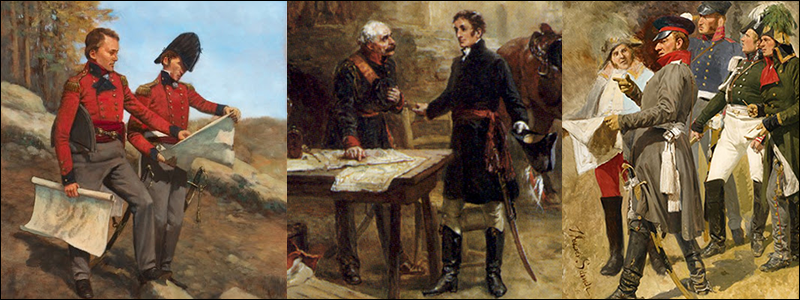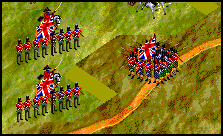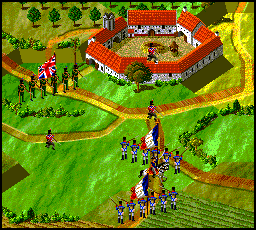|
Allied Training College (ATC) Coalition Library |
Lesson One: Basic Infantry Drill |
Chef de Bataillon Pomme de Voie, Commanding. Just listen-up!! - this is basic training. Your Marshal's Baton stays in the pack for now. Strive to keep your troops in order (that is not disordered)!
Formations
Column: Purpose is to maximize mobility. It takes only a few well trained, experienced troops to head the column so the hazards of terrain are less likely to cause disorder. A major disadvantage is loss of fire power; however several battalions may fire from a hex. Some generals like to mass their battalions in column for melee (cold steel bayonet) attacks and who are you to question that?
Extended line: There are only a few units who get to do this. Purpose is to maximize defensive coverage of hex frontage. Unless you get stuck with such a unit in a scenario, reserve consideration to the advanced tactics class by Fabius Maximus (usually scheduled just after the battle when the instruction would have applied).
Other Forces on the Field The Novice Infantry Officer needs to attend to the needs of the other Specialized Arms on the field of battle. The cavalry: When disposing your battalions, leave open lanes for your cavalry to charge; but try to frustrate the boulevards the enemy will use to destroy you. The artillery: Keep your formed units out of the battery's line of fire. Protect your artillery, but not at the cost of their ability to fire. Terrain is essential for line-of-sight fire; perhaps a skirmisher or two may be what the battery commander needs. Thats it for lesson one soldiers! We`ll have you at 'Armchair General' status within the month!! [Written by J. P. - Scenario Design Centre (SDC)]
|
Site Designed Maintained by Scott Ludwig & Walt Moehle (Coalition Army Webmasters) © 2005-Present September 19, 2024 8:43 AM |



